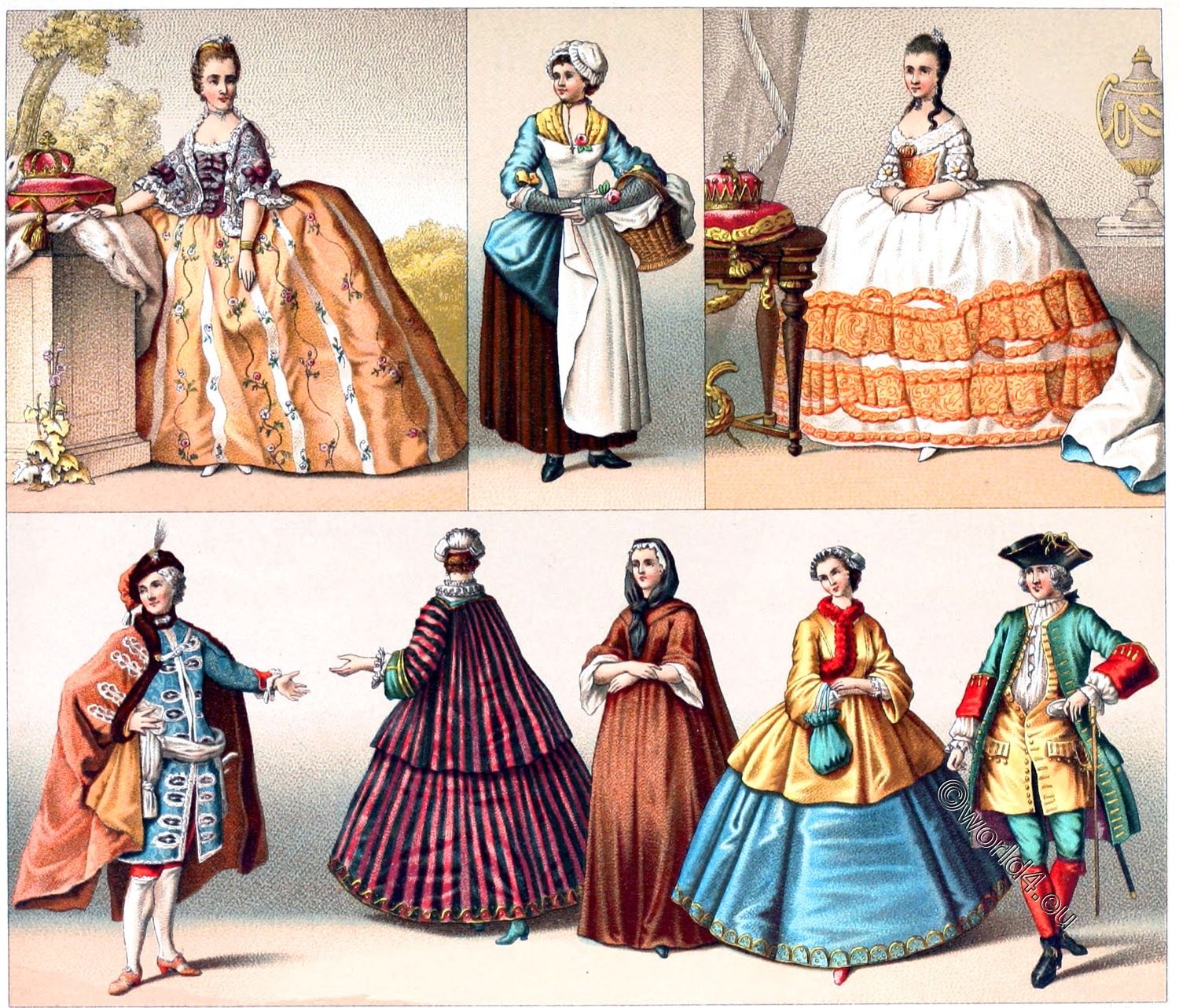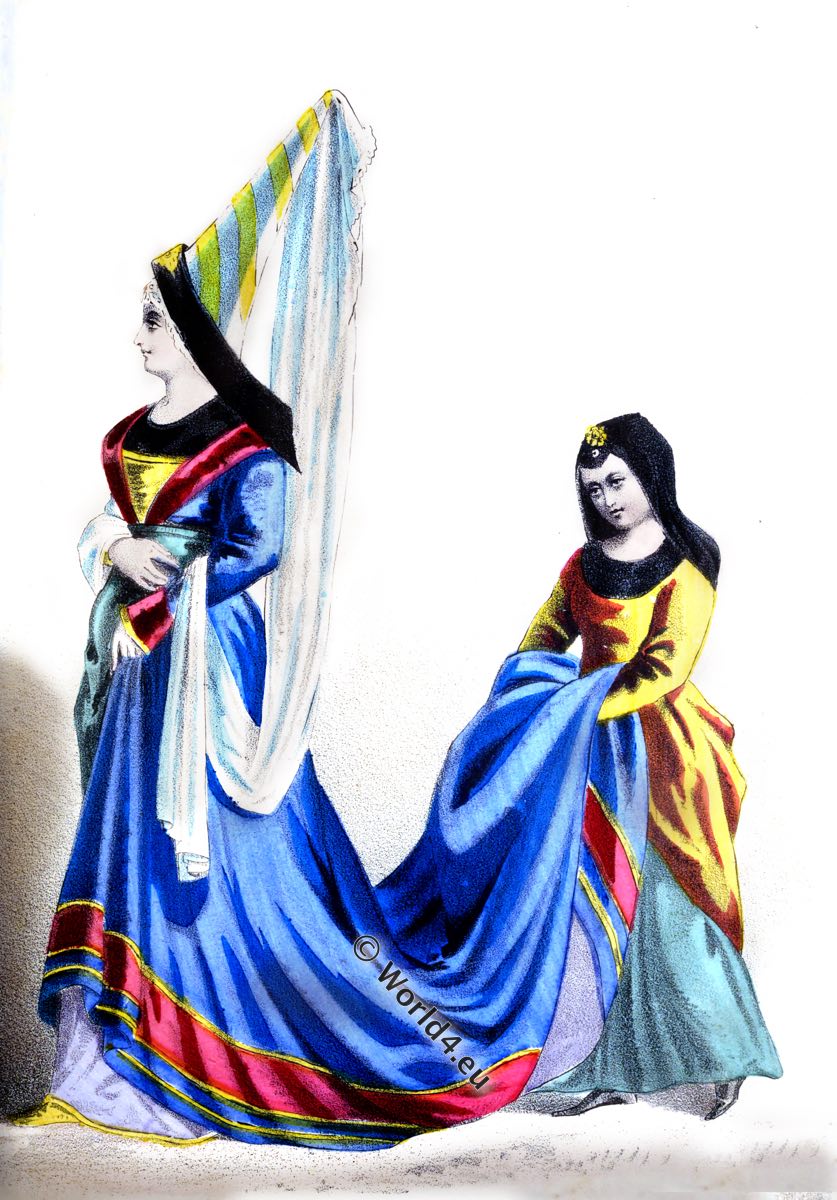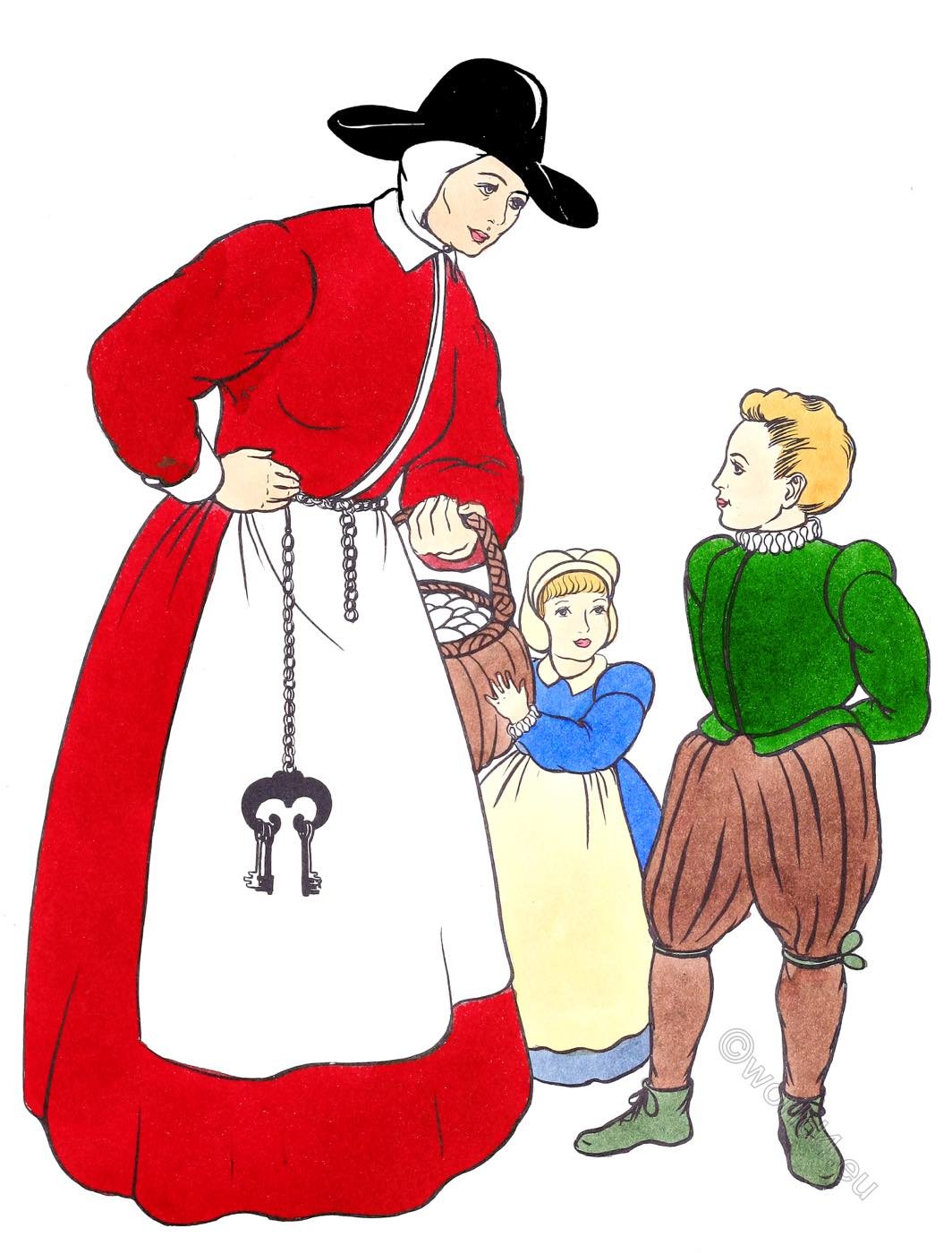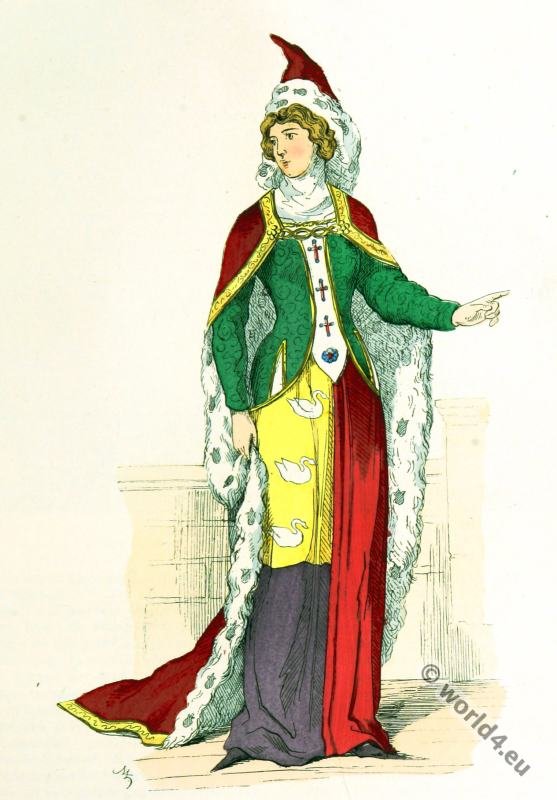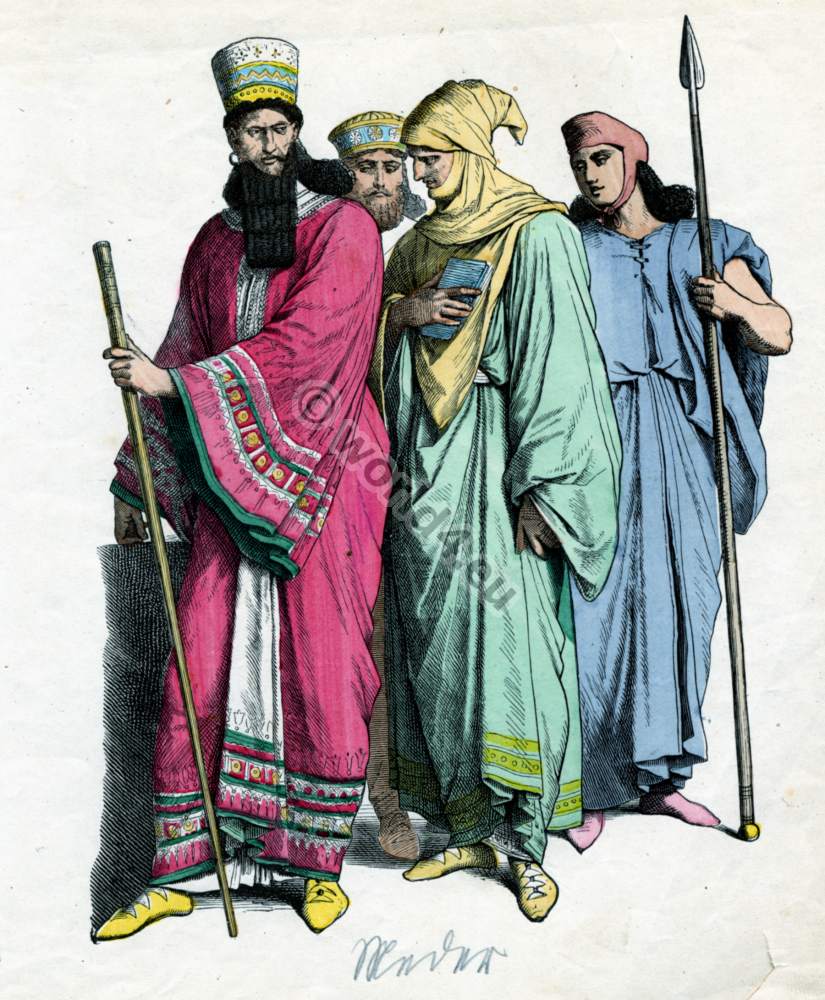
ELIZABETHAN (1558–1603).
PLATE NO. 39.
Explorer of noble rank. Woman of the upper classes.
Tudor period. English Renaissance.
The two figures pictured here ere wearing costumes designed from contemporary Elizabethan portraits. The man’s outfit is that of an explorer of noble rank. The woman is also of the upper classes. In this garb both might well appear before the queen.
The man is wearing a soft, bonnet-like hat with the crown gathered onto a narrow brim. The band is of leather and holds a small ostrich plume. His beard, hair, and mustache show the typical cut of his era. His doublet, probably made of satin (though a less brilliant material would do just as well), is cut on the usual lines. Only the sleeves are visible here.
Notice how they taper from a wide upper arm to a normal wrist. Over his doublet he is wearing a leather jerkin. It is a garment worn over the doublet for protection. With the exception of being sleeveless it is cut on exactly the same lines as the doublet, i.e.; it is padded full in the chest and tapers down to a narrow pointed waist. The collar comes up very high in the back, holding the starched, embroidered, linen collar high up under the ears and close under the jaw.
Notice the small linen cuffs to match at the wrist. The body of the jerkin has been slashed, and the arm holes and bottom have been what the Elizabethans called “wrought in pickendel.” This means that the edges have been trimmed in little tabs or scallops. His hose are in two sections — upper and lower. The upper are what would today be called trousers. The ones shown here were known as Venetian slops. Notice how their edges have been trimmed in the same manner as his jerkin. The lower hose are his stockings.
The shoes are of soft leather. They are trimmed with three slashes and shoe roses, worn, as will be noticed, high on the instep. His sword is attached to a strap hanging from a girdle hidden by his jerkin.
The woman is arrayed in a rich velvet gown worn over the under-gown which is revealed at the chest, lower arms, and opening in the skirt. What is more than likely the case is that the gaily embroidered sections visible at the above mentioned points were actually attached to, and put on, with the over-gown.
Notice that the lines of the bodice are cut very much like those of the men’s doublet. The full skirt in this case probably was held out by a series of petticoats rather than a farthingale. The sleeves are puffed and trimmed with fur. The neck line of the outer-gown is cut low and square.
Notice that the collar has been pleated to resemble a ruff, revealing a great deal of the fine white satin lining. Note, too, the small linen ruffs at her wrist.
Source: Museum Extension Project. History of Costume.
Related
Discover more from World4 Costume Culture History
Subscribe to get the latest posts sent to your email.

